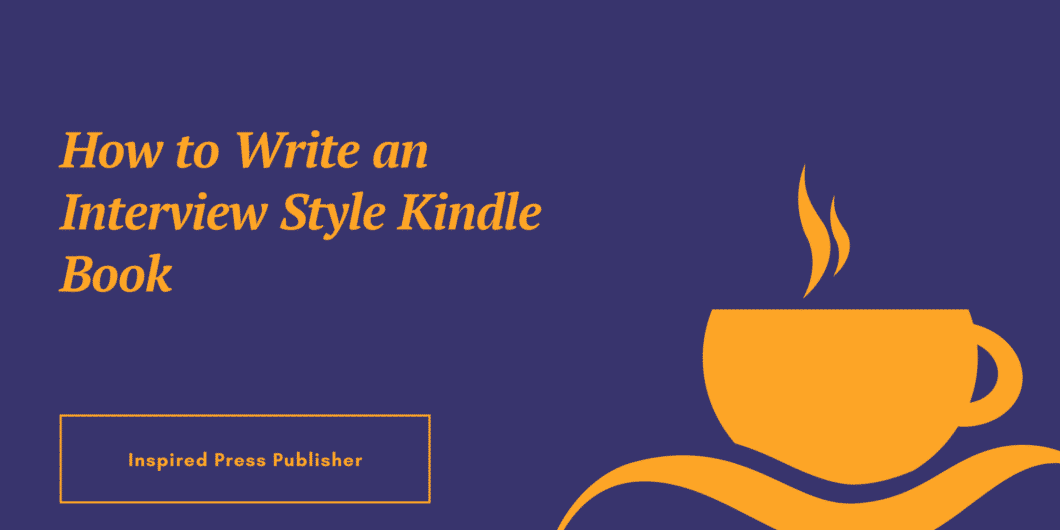How to Write an Interview Style Kindle Book

Interview-style books are very popular with Kindle readers. However, they can end up being long-winded and dreary unless you follow specific practices to punch up the information value.
So as well as an overview, here are specific ingredients you need to include, when writing an Interview-Style Kindle Book…
1. The Interview Stage
Know what your eBook specific slant and topic is going to be before you start interviewing people. That way, your questions will be targeted to extract the most relevant and interesting information for your viewers.
This holds true even if you are planning to create your book from interviews already recorded or completed: Simply go through each one and pull out:
- Only information relevant to the specific topic and slant
- Only “human interest” information that will make the reader identify and humanize your candidate
2. Give Your Interview Candidates an Incentive to Participate
What will most motivate your interview candidate to cooperate? Even if your candidate is agreeing to the interview and being included in your eBook out of pure friendship, you do need to ensure there is reciprocity and reward for them.
Very few interview candidates will do it “just for the publicity”. Expecting them to do so is like asking a plumber to rough in a new basement washroom “for the practice”.
Offer to let them include a link to their own websites, offers or bonuses.
Your Kindle eBook Structure
Here are essential elements you need to include in your Interview-Style book.
- Your Cover Photo – A professional photo of the interview subject or subjects is often your best bet
- Copyright and Publishing Information
- Dedication [optional]
- Table of Contents
- Your Foreword or Preface – Why you are writing the book. Should be something beyond “because my subject is a celebrity.”
One strategy that works well with Forewords: Ask your strongest and most articulate interview candidate to write one for you, or else ask another niche expert not interviewed for the current book to do so.
Ask them to include:
- How they know you
- What they most like about you (professionally)
- What they think the reader will get out of the book
3. Your Introduction
Include:
- Why you decided on an interview format
- What you intend to share via your interview candidates
- What you want the reader to do with the information
- What you don’t want the reader to think she has to do with the information
4. Make Sure Your Interview Candidates Connect
It is crucial that your readers connect with your interview candidates. It is also crucial that they view your subject as an authority figure. Here’s how to make sure this happens.
- Include a short bio of one paragraph or less. You can do it before each specific interview or lump them all together in a chapter preceding all interviews: The choice is up to you.
- Focus on celebrity-status-cementing details that will connect with the reader, rather than on “dry” data (e.g. Showcase the fact your candidate appeared on Dr. Phil or became the first woman to climb Mount Everest with one leg).
- Include a Photo of your interview candidate. People feel more comfortable if they put a face to the name, so a headshot is always preferred. You may not have much control over photos supplied or available, but try to pick one that conveys trustworthiness, warmth, professionalism and a hint of the candidate’s personality.
- Make sure any promotional information you share is reader-centered. The temptation is to stress your interview candidate’s achievements – but only share details that the reader (a) can connect with emotionally, (b) will find helpful, and (c) wants to know.
5. Your Conclusion
The interviews should all combine to either prove your topic subject or give a strong serving of specific niche information.
6. Optional
You can also include the following sections:
- Contributors – If you would like a last chance to acknowledge and promote your interview candidates (or other people who contributed but were not interviewed)
- Resources – This always adds value to a book, if you can recommend further reading, software, apps, services or websites that will enhance what the reader gets out of the book.
Wondering how to format your book when you’re done?
Look no further: www.toolstouse.com/kindleformatter
